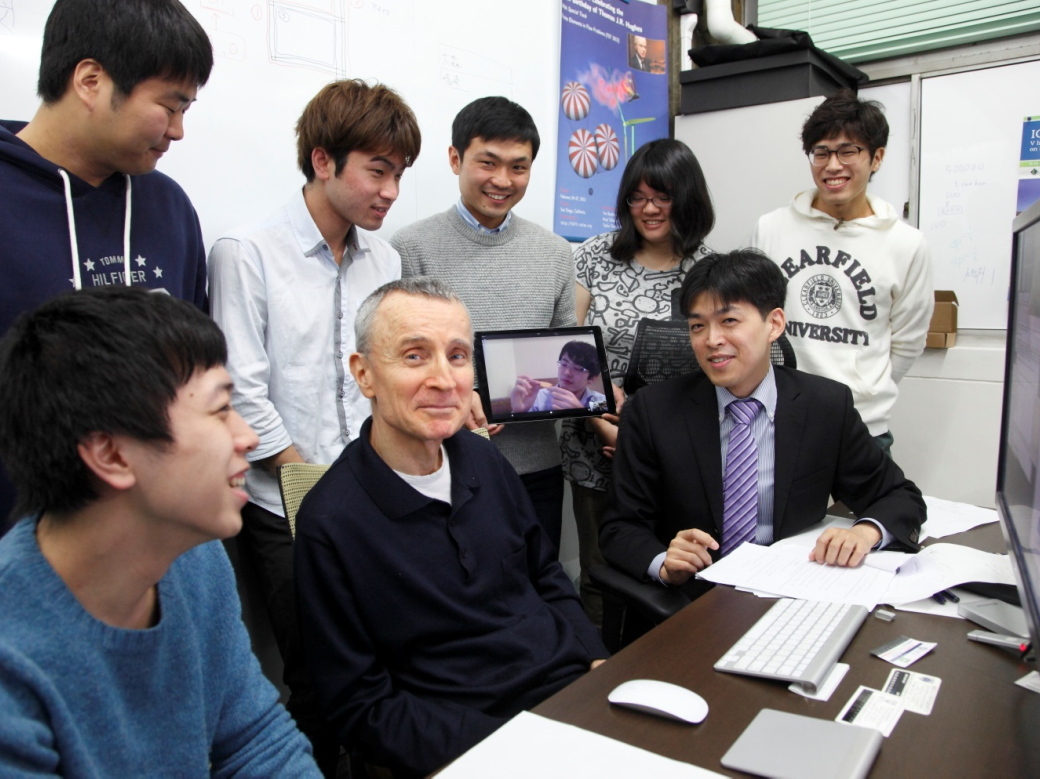Waseda Frontline Research Vol. 14-3: Skillful computational analysis unravels the complex interactions between fluids and structures (Part 3 of 3)
Thu, Apr 27, 2017-
Tags
Research on fluid-structure interactions in applied mechanics
Associate Professor Kenji Takizawa of the Department of Modern Mechanical Engineering, School of Creative Science and Engineering, Faculty of Science and Engineering
From the millimeter-scale of tires to the world
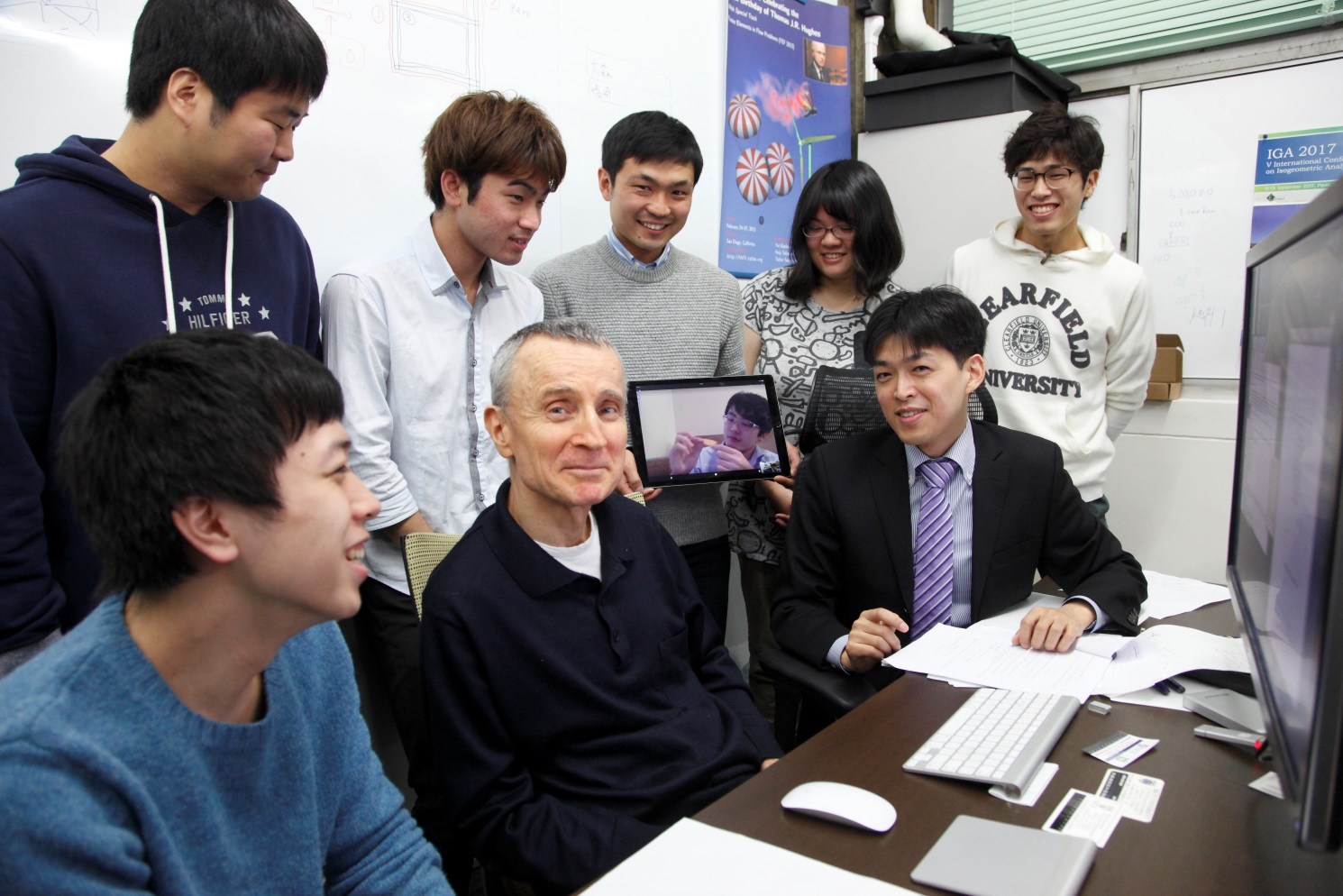 In recognition of his achievements, Professor Takizawa received the Young Scientists’ Prize, Commendation for Science and Technology by Japan Minister of Education, Culture, Sports, Science and Technology in 2015, the Thomson Reuters Research Front Award in 2016, and the NISTEP Award of the Japan National Institute of Science and Technology Policy (NISTEP) in 2016. In this last part of the interview, the Center for Research Strategy asked Professor Takizawa about his team’s computational analysis of airflow around tires. (Interview date: December 14, 2016)
In recognition of his achievements, Professor Takizawa received the Young Scientists’ Prize, Commendation for Science and Technology by Japan Minister of Education, Culture, Sports, Science and Technology in 2015, the Thomson Reuters Research Front Award in 2016, and the NISTEP Award of the Japan National Institute of Science and Technology Policy (NISTEP) in 2016. In this last part of the interview, the Center for Research Strategy asked Professor Takizawa about his team’s computational analysis of airflow around tires. (Interview date: December 14, 2016)
Millimeter-scale details of airflow around a tire
I have also been engaged in analyzing the airflow around tires. Waseda has many joint research projects with the automobile industry, and therefore it was natural that my team also started automotive-related research. We learned from a tire manufacturer that while their main area of research and development is on the physical properties of the rubber, they also want to know more about the influence of airflow. So, we started working with them, hoping to contribute to the field by using our ST methods. For this, we adopted the ST-SI-TC method, as in the blood flow analysis, to deal with the computational challenges involved.
The elasticity of a tire’s rubber is heavily influenced by the temperature. The tire deforms in contact with the ground, and that deformation causes the tire to become hot. The tire does not overheat because the air moving around it at high speed removes the heat. What factors related to the tire geometry and road contact influence the airflow around the tire? How does the airflow cool the tire down? We wanted to answer these questions.
The first thing we observed in our computational analysis was, as expected, how rapidly the temperature dropped as we moved away from the tire surface. At about 1 mm away from the tire, the temperate dropped down to the free-stream air temperate. That distance is less than the depth of the grooves on the tire. This made it clear that the groves had to be taken into account in the heat transfer analysis. That is why we are taking the grooves into account in our computational flow analysis.
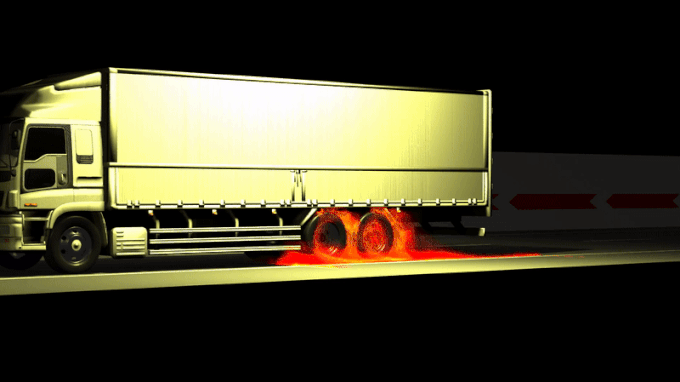
Figure: Thermo-fluid analysis of a freight truck. We note the heat transfer near the rear wheels. (Source: Takizawa Laboratory)
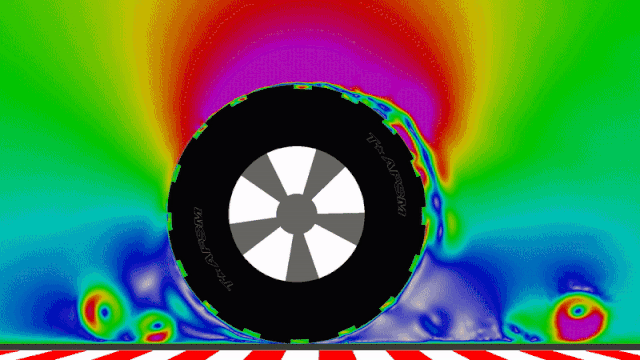
Figure: A schematic demonstration of the tire rotation and road contact. (Source: Takizawa Laboratory)
In this research as well, the ST-TC and ST-SI methods are essential for accurate computation. In the front side of the tire, when the tread comes into contact with the ground, the space occupied by the fluid becomes zero. In the back side, on the other hand, the tread moves away from the ground, and a new space appears. The ST-TC method plays a key role in dealing with such TC.
With the ST-SI method, as the tire rotates, we rotate the mesh around the tire, including the mesh in the grooves, together with the tire. The mesh away from the tire, including the mesh near the road surface, remains stationary. The flow solutions over the moving and non-moving meshes need to be connected in a careful and accurate way, and the ST-SI method accomplishes that.
Our computational analysis with the ST-SI-TC method shows that in the road contact area, the air is pushed forward and sideways in the front, and pulled in straight in the back. The flow patterns in the front include a fast flow jet. There is much more to be done and discovered, and we are continuing to work on that.
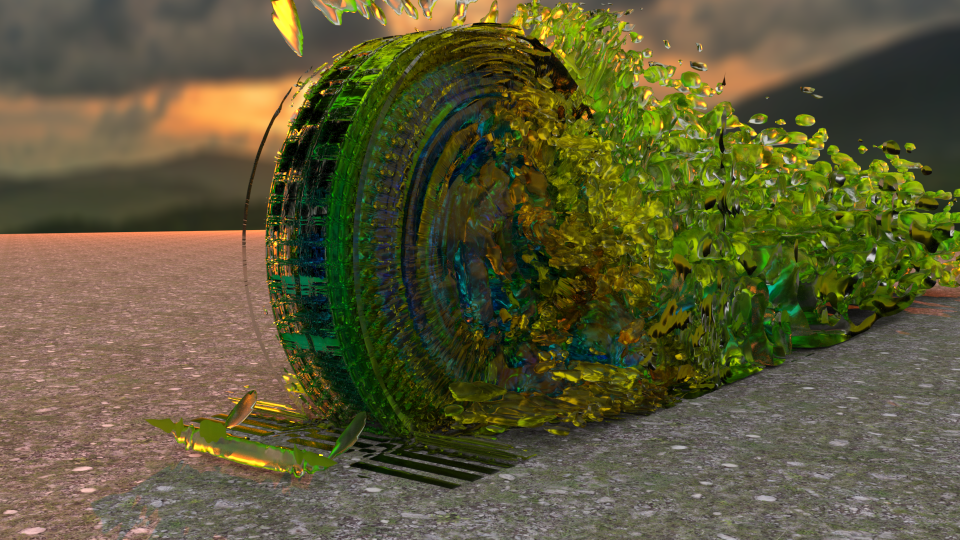
Figure: Computational flow analysis around a tire with road contact and deformation (1) (Source: Takizawa Laboratory)
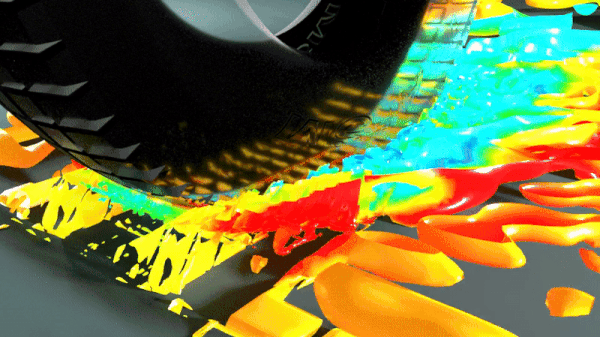
Figure: Computational flow analysis around a tire with road contact and deformation (2) (Source: Takizawa Laboratory)
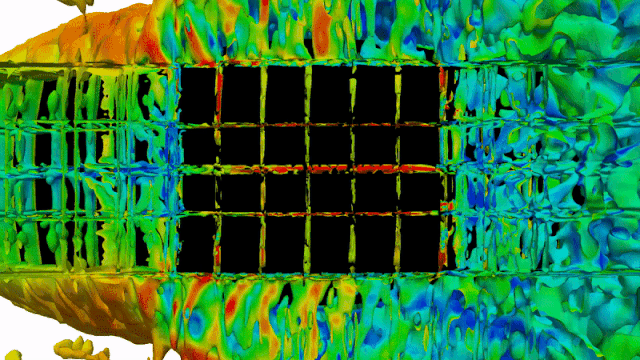
Figure: Computational flow analysis around a tire with road contact and deformation (3). (Source: Takizawa Laboratory)
What’s fascinating about computational analysis is that it not only reproduces on a computer a phenomenon observed in nature, but it also confirms that the mathematical model used in the computation properly represents that phenomenon. With that, we can gain a deeper understanding of the phenomenon. Computational analysis often seems as if there is not much to it beyond just having some powerful computers, but actually its success depends on good team effort and collaboration. We do computational analysis to clarify and quantitatively evaluate events occurring in reality. Therefore, collaboration with experts knowledgeable in the physical aspects of the analysis target is essential for understanding the analysis conditions and the results obtained.
Furthermore, and this is not just limited to research, the bottom line is that the beginning and the ending are what matter in producing great results. What kind of approach should be taken in research, and how do we interpret the results obtained? In computational analysis, it is important to select the most appropriate computation method for the analysis target and to accurately interpret the results.
Now, my greatest satisfaction as a researcher is to be able to aim for the highest goals I set for myself. I had wanted to be a researcher ever since I was little, so research is my passion in life. I am academically persistent, and if I believe I can do something in a certain way, I will pursue that until it is done. For true success that is recognized nationally and internationally, it is essential to advance towards your set goals for absolute impact rather than following popular trends, and to have the tenacity to reach your goals.
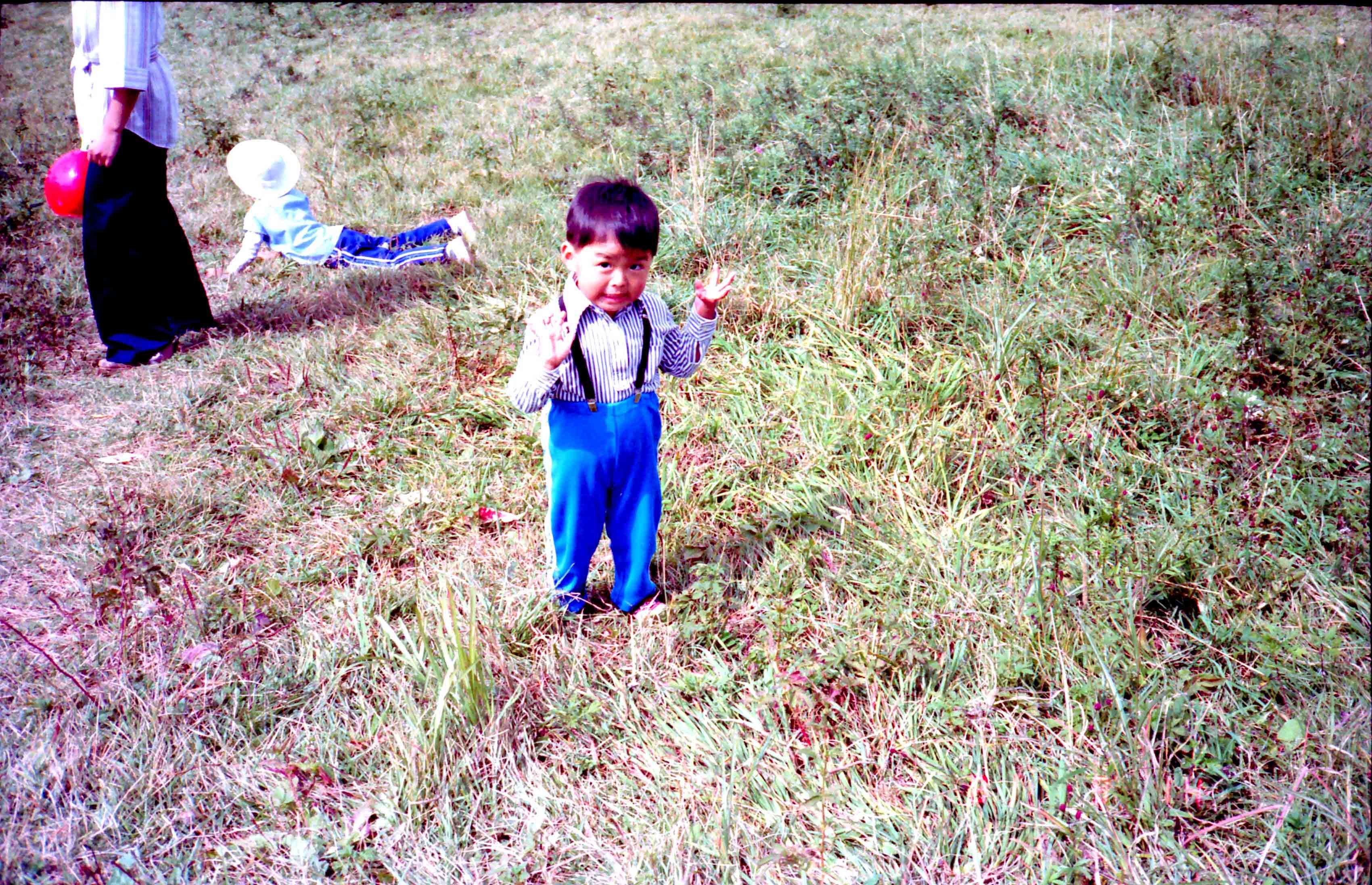
Photo: In his childhood
Moreover, international collaboration in research is crucial for continuing to explore and discover innovative ways. As a member of the T*AFSM (Team for Advanced Flow Simulation and Modeling), founded by Professor Tezduyar of Rice University, I have established ways of exchanging ideas and views with him.
Collaborative work is at the core of concrete progress in computational analysis. Beyond developing the computational methods and computer programs needed, a huge amount of work occurs in the computational analysis of specific problems. Doing this alone would be overwhelming, so we share the work and have cooperation between the team members to move forward with the research projects. In my laboratory, there are five doctoral students, five master’s students and about twenty undergraduate students, all working on different aspects the projects we have in the lab.
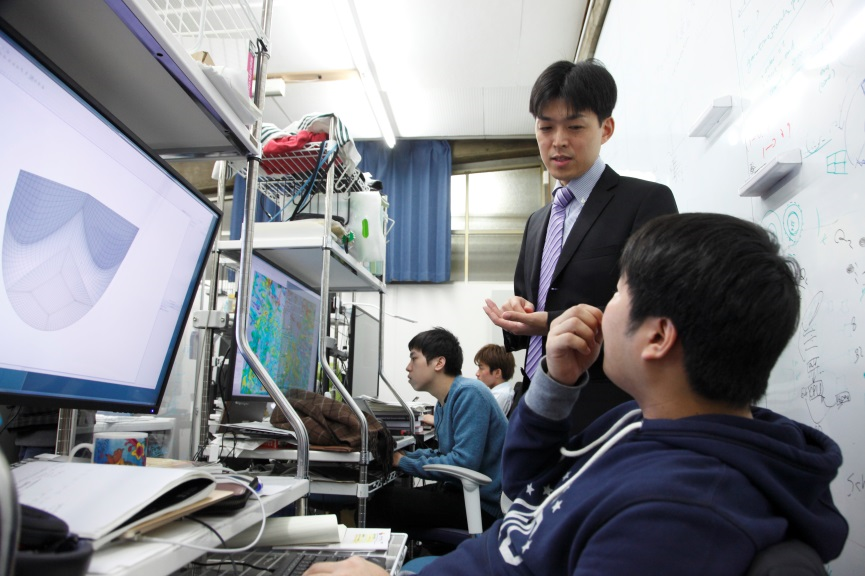
Photo: In the Takizawa Laboratory. What each individual can do for the team’s success.
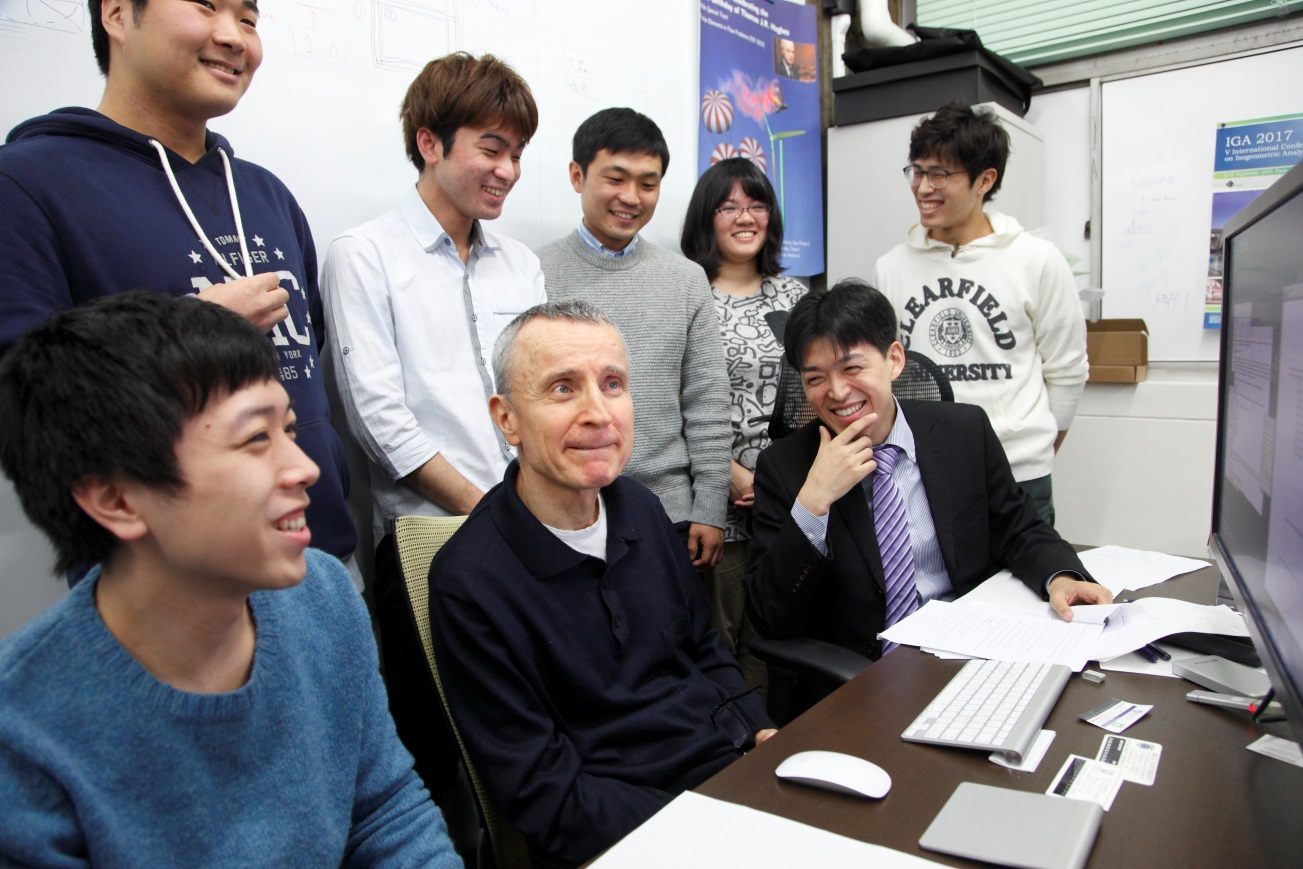
Photo: Members of the laboratory, commenting that the Professor Takizawa’s charms are his easily comprehensible lectures and his “love for sweets.”
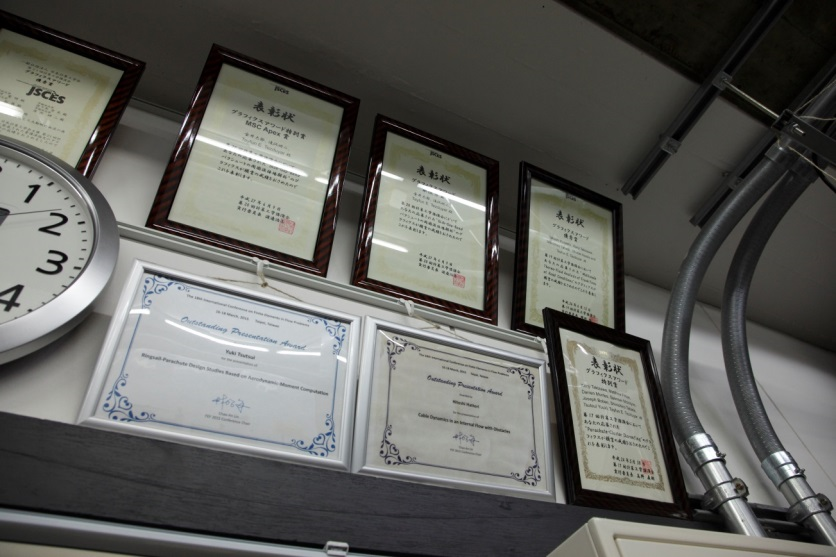
Photo: In the Takizawa Laboratory. The commendation certificates for Professor Takizawa and his students lined along the wall show that the team’s research is well recognized nationally and internationally.
There are thousands of students at Waseda, and it is important for students to have this teamwork spirit in conducting research. I believe that the research in my laboratory will grow more if a new member of the laboratory is not only able to work independently but also share his or her findings with others to further enhance the team.
My wish is to continue excelling in my research of course, but at the same time, because I am advising many talented students, having them become lead researchers one day so that we can work together as colleagues is also a similarly valuable goal. For those who wish to unravel physical phenomena through teamwork, I welcome them to visit my laboratory. I would like to aim high by building a large team of researchers from Waseda, internationally leading in computational analysis.
☞Click here for Part 1
☞Click here for Part 2
Profile
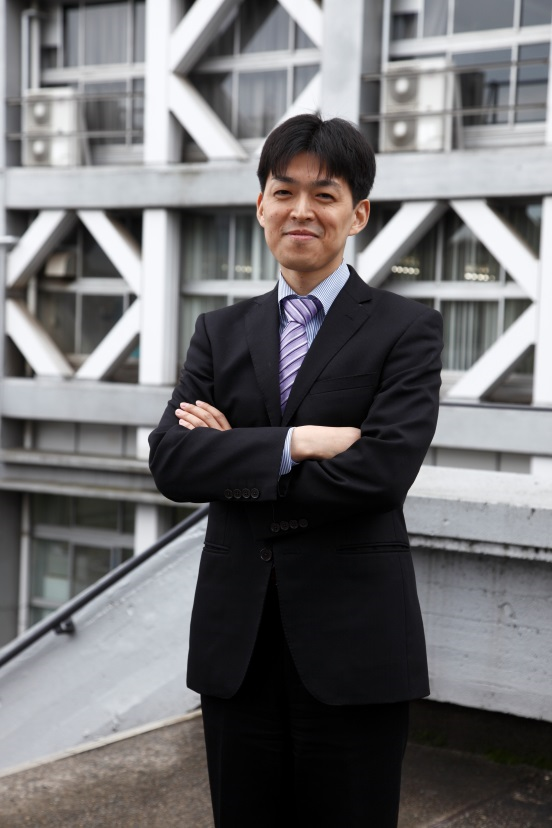 Kenji Takizawa
Kenji Takizawa
Professor Takizawa graduated from Tokyo Institute of Technology’s Department of Mechano-Aerospace Engineering in 2001 and earned his doctoral degree in science from the Department of Energy Science at Tokyo Tech in 2005. He became a research staff member at the National Maritime Research Institute in 2005 and held the positions of research associate and research scientist at Rice University starting in 2007. Professor Takizawa has been an associate professor at Waseda University’s Faculty of Science and Engineering since 2011. Specializing in computational mechanics, he studies a wide range of fields including fluid dynamics, structural mechanics and biomechanics. In recent years, he has gained global recognition and won numerous awards.
Major achievements
Journal articles
- K. Takizawa, T.E. Tezduyar, T. Terahara, and T. Sasaki, “Heart Valve Flow Computation with the Integrated Space–Time VMS, Slip Interface, Topology Change and Isogeometric Discretization Methods,” Computers & Fluids, published online, DOI: 10.1016/j.compfluid.2016.11.012 (2016)
- K. Takizawa, “Computational Engineering Analysis with the New-Generation Space–Time Methods,” Computational Mechanics, 54(2014) 193–211, DOI: 10.1007/s00466-014-0999-z
- K. Takizawa, Y. Bazilevs, and T.E. Tezduyar, “Space–Time and ALE-VMS Techniques for Patient-Specific Cardiovascular Fluid–Structure Interaction Modeling,” Archives of Computational Methods in Engineering, 19 (2012) 171–225, DOI: 10.1007/s11831-012-9071-3
- K. Takizawa, and T.E. Tezduyar, “Computational Methods for Parachute Fluid–Structure Interactions,” Archives of Computational Methods in Engineering, 19(2012) 125–169, DOI: 10.1007/s11831-012-9070-4
- K. Takizawa, and T.E. Tezduyar, “Multiscale Space–Time Fluid–Structure Interaction Techniques,” Computational Mechanics, 48 (2011) 247–267, DOI: 10.1007/s00466-011-0571-z
For other publications see here
Books
- Y. Bazilevs, K. Takizawa, and T.E. Tezduyar, “Computational Fluid–Structure Interaction: Methods and Applications,” Wiley, ISBN 978-0470978771, doi: 10.1002/9781118483565 (2013)
- Y. Bazilevs, K. Takizawa, and T.E. Tezduyar, “Computational Fluid–Structure Interaction: Methods and Applications,” Morikita, ISBN 978-4-627-67481-3, Translation from English: Y. Tsugawa and K. Takizawa. (2015)
Honors and awards
- Young Investigator Award, Japan Association for Computational Mechanics (2007)
- Fellow Award, Japan Association for Computational Mechanics (2012)
- Young Investigator Award, International Association for Computational Mechanics (2012)
- Thomas J.R. Hughes Young Investigator Award, ASME Applied Mechanics Division (2012)
- Young Investigator Award, Asian Pacific Association for Computational Mechanics (2013)
- Computational Mechanics Achievement Award, Japan Society of Mechanical Engineers (2014)
- Waseda Research Award (High-Impact Publication), Waseda University (2014)
- Young Scientists’ Prize, Commendation for Science and Technology by Japan Minister of Education, Culture, Sports, Science and Technology (2015)
- Web of Science Highly Cited Researcher (Engineering), Thomson Reuters (2015)
- Japan Research Front Awards 2016, Thomson Reuters (2016)
- Web of Science Highly Cited Researcher (Engineering), Thomson Reuters (2016)
- NISTEP Award, National Institute of Science and Technology Policy (2016)


